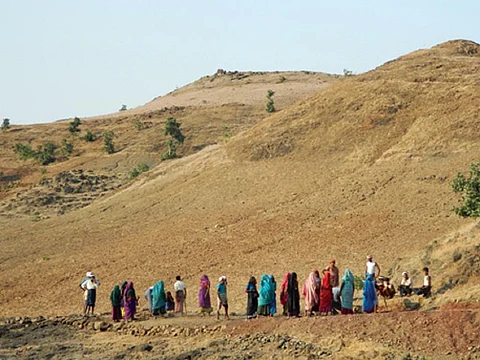

Of the 232 indicators of success under Sustainable Development Goals, 80 indicators, like resource and waste management are under developed.
For the world to achieve Sustainable Development Goals (SDGs) such as zero poverty and hunger by 2030, it is imperative to ensure a means to measure, monitor and report the progress on SDGs.
But recent data from Open Data Watch, a global non-profit working on open data systems shows that at least 80 indicators, mostly environmental, are underdeveloped. The 17 goals have three dimensions—social, economic and environmental—and there are a total of 232 indicators under these dimensions. Indicators are further categorised as Tier I, II and III defined on the basis of their level of methodological development, and the regular production of data.
|
SDG Goal no |
Indicator no |
Indicator |
Tier category |
|
6 |
6.4.2 |
Level of water stress: freshwater withdrawal as a proportion of available freshwater resources |
Tier I |
|
8 |
8.1.1 |
Annual growth rate of real GDP per capita |
Tier 1 |
|
11 |
11.1.1 |
Proportion of urban population living in slums, informal settlements or inadequate housing |
Tier I |
|
2 |
2.a.1 |
The agriculture orientation index for government expenditures |
Tier II |
|
3 |
3.8.2 |
Proportion of population with large household expenditures on health as a share of total household expenditure or income |
Tier II |
|
15 |
15.7.1 |
Proportion of traded wildlife that was poached or illicitly trafficked |
Tier II |
|
11
|
11.a.1 |
Proportion of population living in cities that implement urban and regional development plans integrating population projections and resource needs, by size of city |
Tier III |
|
12 |
12.2.1 |
Material footprint, material footprint per capita, and material footprint per GDP |
Tier III |
|
12 |
12.4.2 |
Hazardous waste generated per capita and proportion of hazardous waste treated, by type of treatment |
Tier III |
Data management to meet SDGs
Monitoring the progress of SDGs requires a vast data collection effort and developing infrastructure for statistics is as important as development issues such as poverty elimination, universal access to quality education, environmental sustainability.
At an ongoing political forum in New York on sustainable development, experts asserted the importance of outreach and dissemination of the progress on SDG through data to influence the policymakers and other stakeholders.
The global forum demanded for an improved coordination to finance the statistical and reporting capacities too– national and worldwide. However, lack of standards for indicators means that there is no benchmark from which to calculate a goal, potentially marring sustainable development.
Moreover, data shows that the 17 SDGs will be adversely affected due to lack of funds meant to set up infrastructure for data management and monitoring.
Lack of funds to track data
At the forum, Zachary Chege, UN Statistical Commission said that realistic measuring and monitoring of 17 goals will be affected due to underfunding of the infrastructure required to make the data accessible and digestible for policy-makers.
The forum estimated that every year till 2030, the world needs an additional $280 million to measure and monitor statistics of developing countries to achieve SDGs. But two 2016 reports show this is an underestimation. The shortage in aid is between $350 and $400 million a year, shows the State of Development Data Funding and Report on Support to Statistics.
Even these are conservative estimates as they do not account for additional resources required to initiate new data collection programs, especially for Tier II and Tier III indicators.
The Sustainable Development Goals Report 2018 released last month too reflected on the challenges faced in data management.
While economic and social dimensions under SDG have national and global measurable indicators, yet a closer look points to the missing data points. These too need to be fixed.
While tier II and III indicators present more challenges, regional Tier 1 indicators too are missing in the Asia-Pacific region. For example, data on key nine indicators from Tier 1 are unavailable in the Asia Pacific region.
This is the third year since SDGs were adopted and the systematic development of 80 Tier III indicators is likely to be a responsibility of the UN’s specialised agencies with limited budgets for statistics. These include the Food and Agricultural Organization, International Labour Organization, UNICEF, World Health Organization, and the World Bank.
Experts at the forum, which ends on July 18, highlighted the importance of establishing a timeframe to collect data on Tier II and III indicators. In October, 2018, at the World Data Forum, organisations will discuss the financing framework for data related to SDGs.